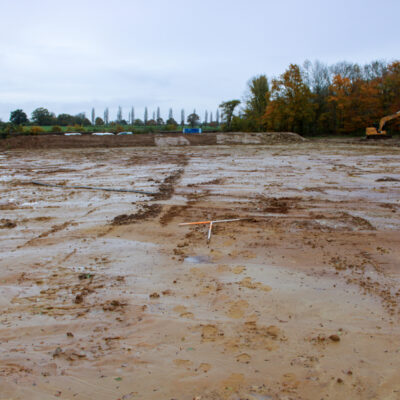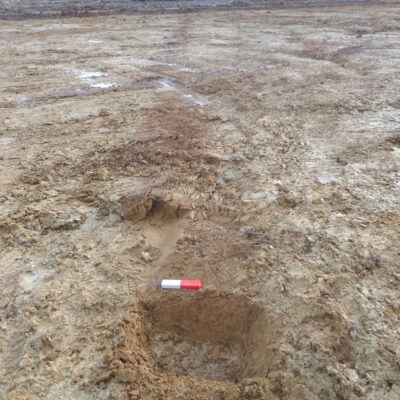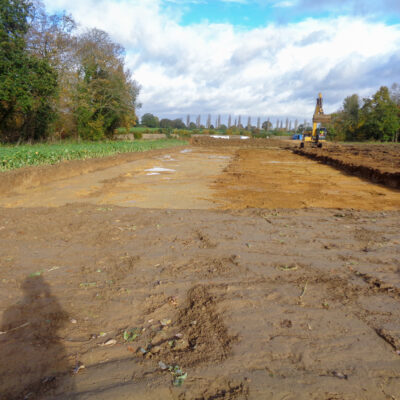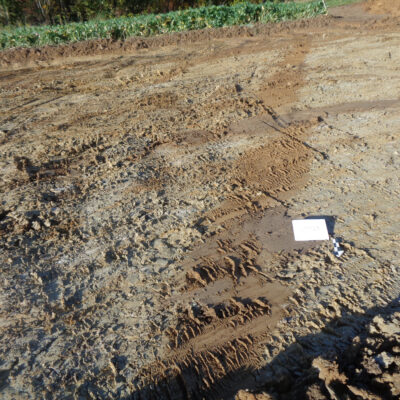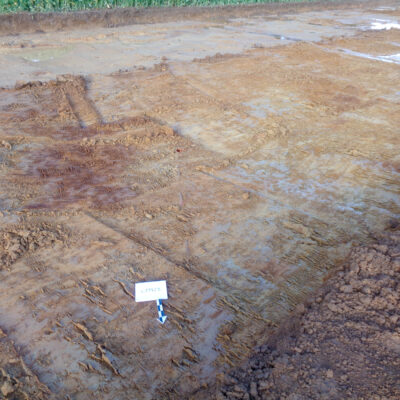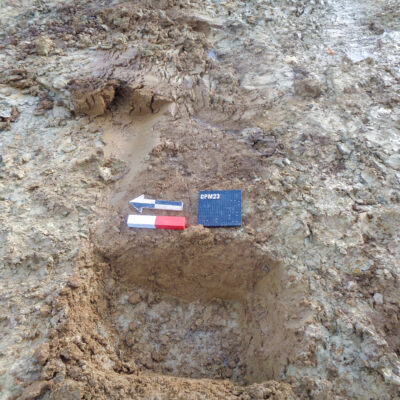Archaeological Observation, Wiltshire
The digesters were to be installed at the farm and used to process food and agricultural waste for biogas generation supplying more than 5000 homes.
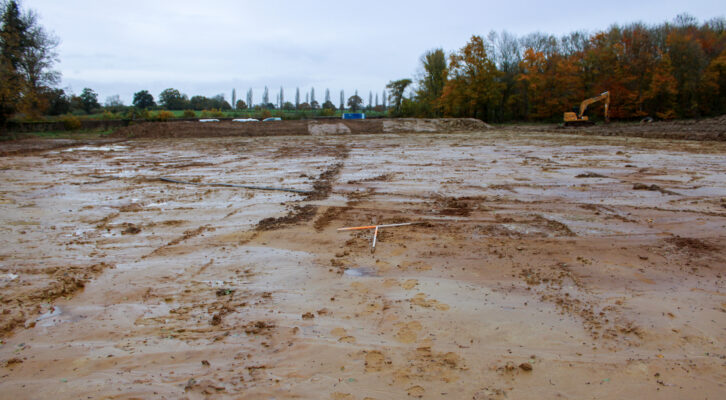
In Brief
Geophysical Survey
Archaeological Observation
Archaeological Evaluation (Trial Trenching)
Archaeological Strip, Map and Record Excavation
Environmental Statement (‘Archaeology’ chapter)
Key Points
- Proposed construction of two anaerobic digesters processing food and agricultural waste for biogas generation supplying more than 5,000 homes
- Evaluation prior to construction targeted areas of potential archaeology recorded during initial geophysical survey. Five of the 28 trenches revealed possible Mid to Late Iron Age features based on artefactual evidence
- Four areas identified for strip, map and record excavation
- Subsequent geophysical survey and archaeological observation in connection with two associated satellite lagoons
Summary
Five of the 28 evaluation trenches opened revealed features thought to be of Mid to Late Iron Age, which included large parallel ditches on the southwest of the site and other smaller features on the west. Consequently, these areas were fully excavated.
Subsequent work focused on an area to the east of the farm where two satellite lagoons were to be constructed under archaeological observation to store digestate fertiliser for agricultural use.
Results
Strip, map and record excavation in four areas confirmed the presence of a Mid to Late Iron Age settlement on the western side of the development area comprising a trackway and the eastern extent of a substantial squared enclosure. The enclosure was thought to have been for pastoral use, although the cattle remains recovered suggested primary butchery/settlement waste.
The development itself was concentrated in the eastern portion of the site and the archaeology was thus minimally impacted.
Of the two proposed satellite lagoons, construction groundworks for one have been completed under archaeologically-controlled machine excavation with no archaeology revealed while the second is awaiting development

